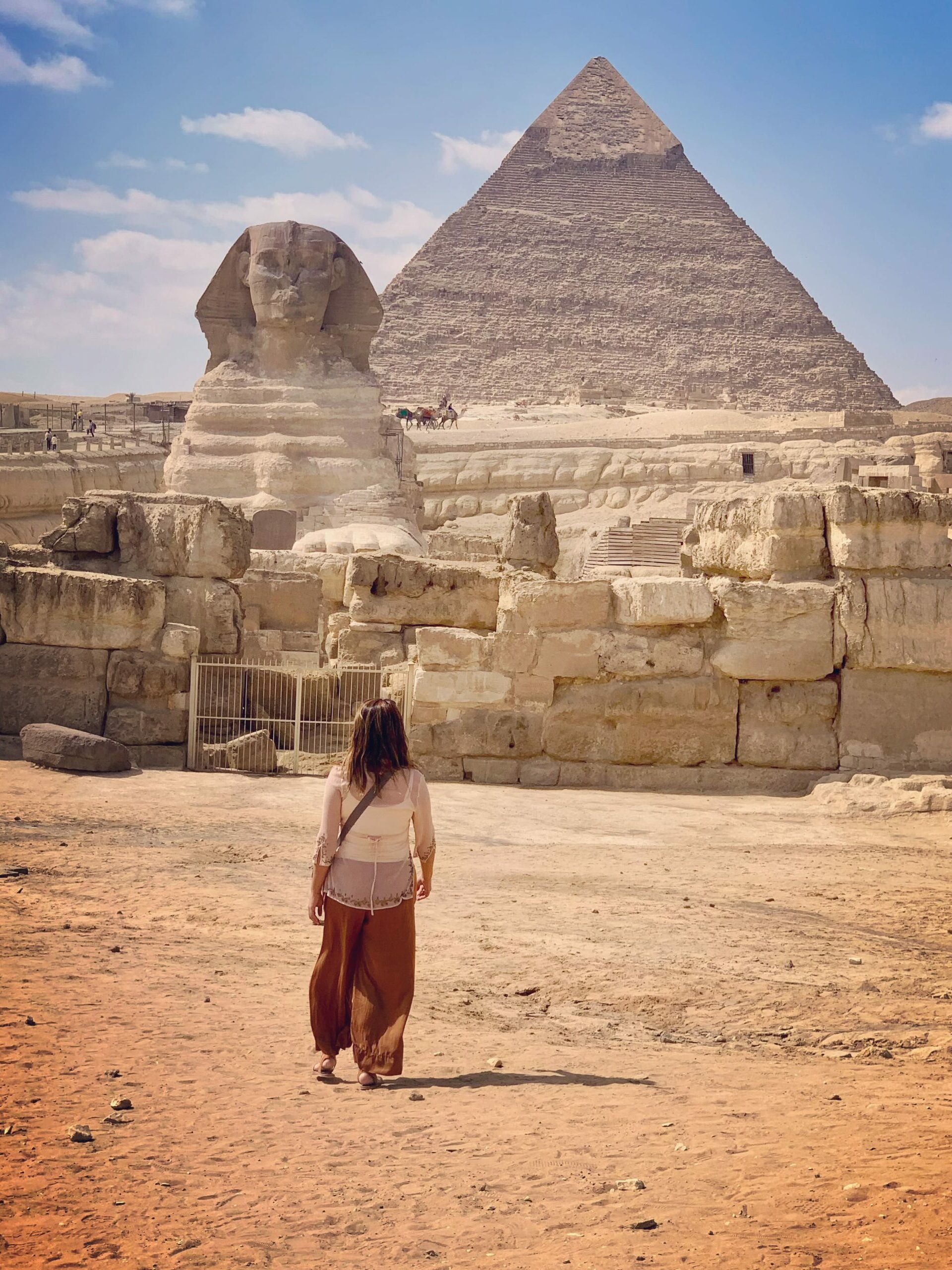Dawn on Nepal’s Rapti River: Birds, Crocodiles and Pink Skies
Last Updated on January 11, 2025
Out on the brackish water, a pair of eyes lurks above the surface.
Our boat man paddles gently to get a closer look. It stares straight at us and doesn’t move an inch. When we are just a few feet away from it, the motionless creature comes into full view — all of its marble-like brown eyes, sharp elongated jaws, bulky snout, and scaly olive back.
On our wooden dugout canoe, we watch in silence as the gharial starts gliding through the water,slowly, in our direction. Everyone in the group, with our iPhones and cameras in hand, start retracting our hands into the safety of the canoe. My heart starts to beat faster but before it hits the panic mode, our local guide Siddhartha motions for the boat man to go. We leave the gharial in peace and it thankfully lets us off the hook.

Water World
It’s dawn and we’re floating on the East Rapti River in Chitwan, the lower Terai valley of southern Nepal. The sky is tinged with a pre-dawn glow: golden orange at the horizon, a deep sapphire blue where the sun has yet to reach. Wispy clouds hang low above the glassy water surface while birds glide over our heads.
This part of Nepal is a world away from the Himalayan mountains and the bustling streets of Kathmandu: Known as the Terai Tarai (“moist land”), the landscape here in Chitwan is a belt of marshy grasslands, savannas, and forests at the base of the Himalayas. It’s hot and sultry, oozing the heat and laidback attitude of India more so than Nepal.
Weaving its way through the Royal Chitwan National Park is the Rapti River, which forms a natural boundary between human settlements on its right-hand side and protected area on its left-hand side. Only the river separates the village from the rhinos and other animals living in the park. Our guide Siddhartha tells us that villagers still live along the river for the water supply — despite the risk of animal attacks.
Home of the Nearest Relative of the Dinosaur
This is also one of the few places in the world where the gharial still lives. When I first read about the gharial, I was really intrigued by it, mainly because it is the nearest surviving relatives of dinosaur.
Let me back it up a bit: The gharial (also known as gavial) is a type of crocodile characterized by its extremely long, thin razor-sharp jaws and bulbous snout, regarded as an adaptation to a predominantly fish diet. It is dark or light olive above with dark cross-bands and speckling on the head, body, and tail. Gharials are so named for the bulbous structure on the tip of the snout in adult males. The word gharial is derived from the Hindi word, “ghara,” which means mud pot.
Due to the loss of its natural habitat, the gharial is listed as critically endangered. The species is considered to be one of the most critically threatened of all crocodilians, and was alarmingly close to extinction in the 1970s. Fortunately, there has been some recovery, and a reasonable amount of hope lies with the conservation and management programs now in place. At the moment, the total population (wild and captive) is estimated at under 1,000 animals.
Native to the Indian subcontinent, they are only found within the river systems of the Brahmaputra (Bhutan and India), the Indus (Pakistan), the Ganges (India and Nepal), and the Mahanadi (India).
Birds of Paradise
Back in the river, the tranquility is disrupted by ducks squawking and birds chirping. Siddhartha points out a pair of brown-feathered ducks by the river banks, “Those are the Siberian duck.” The duck scampers off just before I can take a good shot.
With years of birding experience under his belt, Siddhartha has developed sharp hawk-like vision and catches every single movement around us. Before I have the chance to ask a question, he turns in swift motion and urges us to look, “This is the white throated kingfisher; there are seven types of kingfishers here.”
All sorts of bird species inhabit this area, including herons, egrets, and cormorants. Just as we are nearing the end of our journey on the river, a huge flock of black cormorants are on a feeding frenzy — catching fish at an astonishing rate. We watch in awe but within a few minutes, breakfast time is over and over hundreds of them take off unanimously into the skies as one flock. It’s quite a sight to behold.
Later, over a relaxed lunch of traditional foods in Nepal, Siddhartha shared more about the region’s fascinating biodiversity and conservation efforts. Before we cross over to the other side of the river, Siddhartha spots a crocodile lying along the bank, tanning its back under the sun with its teeth out and eyes opened. Pointing to the croc, Siddhartha jokes, “Now you know why you cannot swim here!”
How to:
This dugout canoe trip was organized as part of an excursion to the Chitwan National Park by G Adventures on the Nepal Adventure (ANNA) trip. The excursion – which also includes a two-hour walk in the national park and a jeep safari – is included in the price of the ten-day trip. You can also arrange it with your hotel/lodge or simply check with the many boatmen at the jetty near Sauraha town.
Disclaimer: While this trip was made possible by G Adventures, all opinions of course are my own.






